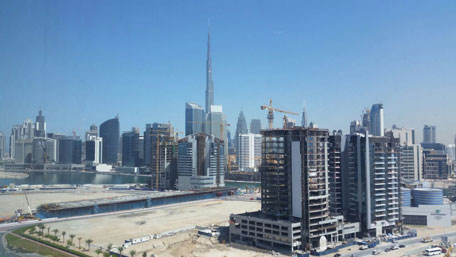Dubai’s residential rent decline is spreading to more locations and chances are this should continue well into the next year. But tenants should not be expecting a sharp decline similar to the one they saw back in 2009. This time out, the softening will stick to a narrow range.
But for cash-strapped households, any relief on the rental side would be welcome. And where the decline does not match tenant expectations, they are likely to look elsewhere.
“We expect the next cycles of renewals to result in rent reductions and tenant relocations, leading to modest falls in overall market averages over the next 12–24 months,” says the new Dubai property update from Core Savills. “We extend our forecast of the ongoing rental softening onto next year.”
The first cracks in the rental market appeared in the second-half of 2015, and more or less confined to the upscale neighbourhoods — the Jumeirah villas for one and on the Palm — of Dubai.
And then through 2016, the declines became more apparent in Dubai Marina and the Downtown. This year, both freehold and the more traditional residential areas are seeing landlords feeling the pinch.
Depending on an individual’s budget, Jumeirah Village and the Downtown are where he should be looking to get the maximum benefits from the drop. At the former, rents are down 7 per cent.
“While the handover of new, higher quality units contributed to resilient sales prices, rents continued to decline due to weak tenant demand and increased competition amongst older and new units,” said David Godchaux, CEO of Core Savills. “Due to weak tenant demand, many landlords in this area now offer tenants attractive payment options such as 12-cheque rent instalments or one-month rent-free.”
As for the Downtown, lease rates are lower by around 6 per cent as “new developments in neighbouring areas were handed over and offered tenants more options”. For instance, the apartments at City Walk pulled in some of the demand and are “likely to gain more traction as the community reaches higher occupancy levels”.
Keeping the rental market in a state of flux is the solid gain in new handovers. Deliveries during Q3-17 were “significantly higher” than in the second quarter, totalling 5,950 units compared to 3,500.
“This spike in deliveries can be attributed to the completion of several sizeable developments over the summer, some of which were delayed from Q2-17 and the Ramadan period,” Godchaux said. “We conservatively estimate a further 5,000 units will be delivered by the end of the year in line with our annual forecast of 17,800 units, largely in the mid-market segment.”
So, where does this leave the investor eyeing optimum yields from Dubai property? “Further yield compression is likely although fundamentals for such compressions significantly vary across market segments,” the report adds. “The bottom segment units are anticipated to suffer the most due to insufficient future tenant demand.
“On the contrary, the upper mid-market and prime segments should witness yield compression caused by gradual stabilization and recovery in prices combined with
stronger resilience in rentals in the mid-term.
“Lower income occupiers remain hesitant to buy, whilst investor-driven demand keeps off-plan sales buoyant – albeit with developers increasingly competing on price points.”
The buoyancy in the offplan selling space is double-edged. While it will be enticing for developers to keep launching more and mop up as many buyers out there as possible, it also raises concerns over a significant stock build-up. Any sudden shift in investor support for offplan would be detrimental to the longer term health of the market.
“Although we anticipate the number of proposed units and actual hand-overs to vary notably, we expect developers to continue building in the run up to 2020 creating a significant surplus in the lower end of the market that does not adequately address the needs of target end-users,” said Godchaux. “Despite stronger regulations being in place, we continue to view increasing off-plan activity with caution, particularly given its detrimental effect on ready sales that fuels further systemic market risk.”
All rights reserved to the initial publisher for Gulf News.
Collected and published by Arms &McGregor International Realty® editorial team. Get in touch with us at [email protected].

